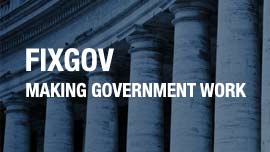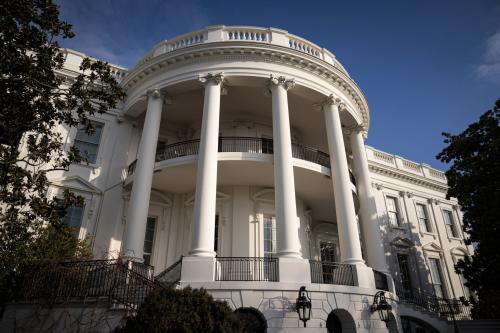Editor’s Note: A shorter version of this article first appeared as an op-ed in The Philadelphia Inquirer.
From Juneau to Sante Fe to Baton Rouge, state politicians are trying to figure out what to do about the popular energy tax—and its wildly fluctuating revenues. All of these states, and more than two dozen others, have adopted some form of a severance tax, which imposes a cost on the extraction of oil or gas, non-renewable resources that are being permanently removed from below the Earth’s surface.
Unlike most other energy taxes, these tend to be quite popular politically, in large part because much of the cost is ultimately shifted to energy consumers in other states. Indeed, Sarah Palin’s rise to national prominence was based in large part on her advocacy for a steep increase in Alaska’s version of the tax applied to “our oil.” And one big reason why governors like Rick Perry and Bobby Jindal have been able to cut other taxes in recent years is because so much money flowed into their treasuries during the recent years of the shale boom. All of their numerous predecessors, including George W. Bush and Huey Long, were big fans of this tax.
That boom has not exactly busted but it surely is not producing as much revenue as it was just a year or two ago in most places. This has led to political pressure in some states to try to cut rates on the popular energy tax to stimulate more drilling. It has also badly compromised a number of those state budgets dependent on severance tax revenues to cover current expenditures.
And then there is the Pennsylvania case, where Democratic Governor Tom Wolf and a Republican legislature are locked in budgetary double-overtime largely due to a stand-off on severance taxation. What is a state to do when it continues to generate lots of natural gas, the public routinely endorses a severance tax in survey after survey, but politicians from different parties and regions bitterly divide over how to proceed? Perhaps Governor Wolf and the legislature should take a break from their budget and tax battles and spend some time in Norway. Or keep the costs down by visiting North Dakota instead.
Both Norway and North Dakota are model petro-powers. Both sit atop massive oil resources and yet they have devised ways to avoid the common “resource curse” that so often afflicts major producers of non-renewable energy like oil, gas, and coal. Indeed, North Dakota, which boasts the largest Norwegian-American population of any state, formally borrowed a bunch of Scandic ideas a few years ago and put them to immediate use. All were aimed at securing reasonable amounts of revenue from extraction for the public good but not becoming so dependent on those sources that they would succumb to the inevitable boom-and-bust cycle.
For Pennsylvania, this is familiar territory. Prices hit ten dollars per barrel within one year of the Titusville oil discovery in January 1861, just a few months before the beginning of the Civil War. But those prices plunged by 99 percent, to a dime a barrel, one year after that, as Michael Ross noted in his splendid book, The Oil Curse.
The Keystone state has been living with some form of boom-and-bust ever since. It has always proven reluctant, despite high tax rates in other areas, to impose a cost on extraction that might encourage the next bust. But it has never been able to prevent that next collapse, whether the commodity was oil, coal, or gas. As a result, Pennsylvania remains the only major oil and gas producing state without such a tax and the issue returns during every budgetary cycle.
In the North Dakota case, the state operates two overlapping severance taxes that have captured 11.5 percent of the gross value of extracted oil. During the recent legislative session, it reduced that rate to 10 percent, but with triggers that would increase the rate as the price of oil increases.
The taxes produce considerable revenue, $2.5 billion in fiscal 2013. This is more than ten times what Pennsylvania captured in the same year from its non-tax impact fee, set at an effective rate of one to two percent, as Rachel Hampton and I explore in a recent paper.
So North Dakota captures fair amounts of revenue that Pennsylvania leaves on the table. But it has also taken significant steps not to follow the resource curse playbook and blow it all at once.
Instead, North Dakota amended its constitution five years ago to create a legacy fund. This is a formal trust fund that captures 30 percent of the annual tax haul and sets it aside for long-term investment.
Only portions of the fund can be spent in each legislative session and any initial expenditures are delayed until 2017. Proponents wanted to allow time for the principal to grow and serious study of spending options to occur. The idea here was permanence, preparing North Dakota for inevitable production decline and long-term needs that they anticipate based on prior experience with oil and coal. Republicans and Democrats in the state generally agree on the merits of this and the trust fund was endorsed by a large margin in a ballot proposition.
The Norwegian parallels are really quite strong, given its transfers of significant amounts of oil revenue into its world-class sovereign-wealth fund, the Government Pension Fund. Extract now, don’t spent it all at once, think longer term. Only ever-prudent Utah has adopted a comparable (albeit more modest) mechanism via constitutional amendment during the shale era. But other states, such as Colorado, are also experimenting with other ways to set aside significant amounts of their severance tax bounty to prepare for longer-term environmental challenges that can be linked to shale development.
Imagine if Pennsylvania had set up a severance tax and trust fund in the 1860s. Or during any of its repeated spasms of fossil fuel production since things settled down at Gettysburg. Neighboring West Virginia has been kicking itself for dropping the ball on its own long-term extraction of fossil fuels. In 2014, it created a much smaller version of the legacy fund, while beginning to explore possible expansion and constitutional protection.
Instead, Pennsylvania is locked into another ugly battle over this issue. The governor wants a tax and wants to spend it now. The legislature does not want a tax and is looking for ways to cut other taxes to encourage more drilling. Industry is threatening to ship its drilling rigs to Ohio if a tax is created. But Ohio already has a severance tax and its Governor (and presidential aspirant) John Kasich wants to give it a significant boost in order to cut other taxes.
Harrisburg isn’t Oslo or Bismarck. But as its latest severance tax stand-off continues, it should be noted that other oil and gas super-powers have found ways to sustain a viable tax regime and extended production. They have also found ways to use it not only for short-term bounty but longer-term needs, with constitutional protections that go far beyond the statutory strings that tend to hold together trust funds at the federal level.
The Brookings Institution is committed to quality, independence, and impact.
We are supported by a diverse array of funders. In line with our values and policies, each Brookings publication represents the sole views of its author(s).




Commentary
Lessons from the popular energy tax
August 14, 2015